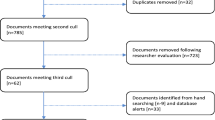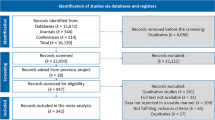Abstract
In Australia, concerns about the quality of mathematics education that students experience are particularly salient in rural schools. These schools typically report great difficulty in attracting and retaining qualified teachers of mathematics. Teachers in non-metropolitan locations may also experience professional isolation if they have limited access to professional development opportunities. This article reports on a year-long research and development project that provided such opportunities to teachers in ten rural and metropolitan schools in South Australia. Its purpose was to help the teachers plan and implement numeracy strategies across the school curriculum. The project was informed by a new model of numeracy whose elements comprise mathematical knowledge, dispositions, tools, contexts, and a critical orientation to the use of mathematics. To investigate the effectiveness of the numeracy model and the professional development approach, data were collected via lesson observations, teacher and student interviews, and written tasks that tracked changes over time in teachers’ understanding of numeracy. Most teachers began the project with a concern for improving students’ mathematical knowledge or dispositions, but then gradually incorporated other elements of the model into their planning and practice. A case study of an early career teacher in a rural school illustrates one developmental trajectory through the elements of the model. Teachers identified time, openness, collegiality, and accountability as features of the professional development approach that contributed to its effectiveness. Implications for sustainability and scaling up are discussed, especially with reference to supporting teachers in rural schools.

Similar content being viewed by others
References
Australian Association of Mathematics Teachers. (1997). Numeracy = everyone’s business. Report of the numeracy education strategy development conference. Adelaide: AAMT.
Australian Curriculum Assessment and Reporting Authority (2009). Australian curriculum. Retrieved 30 November 2010 from http://www.acara.edu.au/curriculum.html.
Australian Curriculum Assessment and Reporting Authority, (2010). National Assessment Program – Literacy and Numeracy. Retrieved 30 November 2010 from http://www.naplan.edu.au/.
Cockcroft, W. (1982). Mathematics counts. London: HMSO.
Frankenstein, M. (2001). Reading the world with math: Goals for a critical mathematical literacy curriculum. Keynote address delivered at the 18th biennial conference of the Australian Association of Mathematics Teachers, Canberra, 15–19 January.
Goos, M. (2007). Developing numeracy in the learning areas (middle years). Keynote address delivered at the South Australian Literacy and Numeracy Expo, Adelaide.
Goos, M., Geiger, V., & Dole, S. (2010). Auditing the numeracy demands of the middle years curriculum. In L. Sparrow, B. Kissane, & C. Hurst (Eds.), Shaping the future of mathematics education (Proceedings of the 33rd annual conference of the Mathematics Education Research Group of Australasia, pp. 210–217). Fremantle: MERGA.
Human Capital Working Group, Council of Australian Governments (2008). National numeracy review report. Retrieved 12 January 2010 from http://www.coag.gov.au/reports/docs/national_numeracy_review.pdf.
Jablonka, E. (2003). Mathematical literacy. In A. Bishop, M. A. Clements, C. Keitel, J. Kilpatrick, & F. Leung (Eds.), Second international handbook of mathematics education (pp. 75–102). Dordrecht: Kluwer.
Loucks-Horsley, S., Love, N., Stiles, K., Mundry, S., & Hewson, P. (2003). Designing professional development for teachers of science and mathematics (2nd ed.). Thousand Oaks: Corwin Press.
Lyons, T., Cooksey, R., Panizzon, D., Parnell, A., & Pegg, J. (2006). Science, ICT and mathematics education in rural and regional Australia: The SiMERR national survey (Abridged report). Retrieved 16 September 2010 from http://www.une.edu.au/simerr/pages/projects/1nationalsurvey/Abridged%20report/Abridged_Full.pdf.
Malloy, C. (2002). Democratic assess to mathematics through democratic education: An introduction. In L. English (Ed.), Handbook of international research in mathematics education (pp. 17–25). Mahwah: Lawrence Erlbaum.
McLeod, D. (1992). Research on affect in mathematics education: A reconceptualization. In D. Grouws (Ed.), Handbook of research on mathematics teaching and learning (pp. 575–596). New York: Macmillan.
McPhann, G., Morony, W., Pegg, J., Cooksey, R., & Lynch, T. (2008). Maths? Why not? Final report. Canberra: Department of Education, Employment and Workplace Relations.
Ministry of Education. (1959). 15 to 18: A report of the Central Advisory Council for Education. London: HMSO.
National Council of Teachers of Mathematics. (2000). Principles and standards for school mathematics. Reston: NCTM.
National Curriculum Board (2009). Shape of the Australian curriculum: Mathematics. Retrieved 12 January 2010 from http://www.acara.edu.au/verve/_resources/Australian_Curriculum_-_Maths.pdf.
Noss, R., Hoyles, C., & Pozzi, S. (2000). Working knowledge: Mathematics in use. In A. Bessot & J. Ridgeway (Eds.), Education for mathematics in the workplace (pp. 17–35). Dordrecht: Kluwer.
Organisation for Economic Cooperation and Development. (2004). Learning for tomorrow’s world: First results from PISA 2003. Paris: OECD.
Sfard, A., & McClain, K. (2002). Analyzing tools: Perspectives on the role of designed artifacts in mathematics learning. The Journal of the Learning Sciences, 11(2&3), 153–161.
Somekh, B., & Zeichner, K. (2009). Action research for educational reform: Remodelling action research theories and practices in local contexts. Educational Action Research, 17(1), 5–21.
Steen, L. (2001). The case for quantitative literacy. In L. Steen (Ed.), Mathematics and democracy: The case for quantitative literacy (pp. 1–22). Princeton: National Council on Education and the Disciplines.
Thomson, S., De Bortoli, L., Nicholas, M., Hillman, K, & Buckley, S. (2010). Challenges for Australian education: Results from PISA 2009. Retrieved 27 January 2011 from http://www.acer.edu.au/documents/PISA-2009-Report.pdf.
Zevenbergen, R. (2004). Technologising numeracy: intergenerational differences in working mathematically in new times. Educational Studies in Mathematics, 56, 97–117.
Author information
Authors and Affiliations
Corresponding author
Rights and permissions
About this article
Cite this article
Goos, M., Dole, S. & Geiger, V. Improving numeracy education in rural schools: a professional development approach. Math Ed Res J 23, 129–148 (2011). https://doi.org/10.1007/s13394-011-0008-1
Received:
Revised:
Accepted:
Published:
Issue Date:
DOI: https://doi.org/10.1007/s13394-011-0008-1




